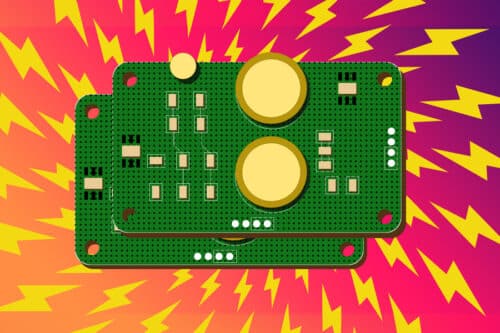MIT researchers have developed a system that enables sensors to function in remote locations without batteries.

MIT researchers have achieved a groundbreaking feat by creating a self-powered sensor that doesn’t require batteries and can harness energy from its surroundings. This innovation has the potential to revolutionise various industries due to its ability to operate in hard-to-reach places, such as the inner workings of a ship’s engine, where conventional sensors with batteries may be impractical. The researchers developed a temperature-sensing device that can harvest energy from the magnetic field generated around a wire. By attaching the sensor to an electric wire, like the one powering a motor, it can autonomously accumulate and store energy to monitor the motor’s temperature over extended periods.
The researchers provide a design guide for engineers to balance environmental energy availability with sensor requirements. The framework isn’t limited to magnetic field energy harvesting. It can be applied to other power sources like vibrations or sunlight, making it suitable for various applications in factories, warehouses, and commercial spaces, reducing installation and maintenance costs. The sensor’s development tackled three significant challenges:
- Cold Start Capability: The system needs to start without initial voltage, which is achieved by using integrated circuits and transistors to store energy until a threshold is met for full operation.
- Energy Storage and Conversion: The sensor must efficiently store and convert harvested energy without relying on a battery, using capacitors to store energy in the electrical field between conductive plates.
- Energy Management: Dynamic control algorithms measure and manage energy collected, stored, and used by the device, optimising power harvesting and usage.
The researchers successfully built an energy management circuit for a temperature sensor that harvested magnetic field energy and transmitted temperature data to a smartphone interface via Bluetooth. In the future, the team plans to explore less energy-intensive data transmission methods like optics or acoustics. They also aim to model and predict energy needs to enhance data collection accurately. This self-powered sensor has vast potential applications, from ship systems monitoring to various industrial uses, and is expected to reduce maintenance costs significantly. Its design framework provides practical guidelines for engineers, ensuring the successful deployment of self-powered sensor nodes in real-world scenarios. The Office of Naval Research and The Grainger Foundation supported the project.
Steve Leeb, the Emanuel E. Landsman Professor of Electrical Engineering and Computer Science and professor of mechanical engineering at MIT, described it as “ambient power” that doesn’t require a specific soldered connection, making installation remarkably straightforward.













